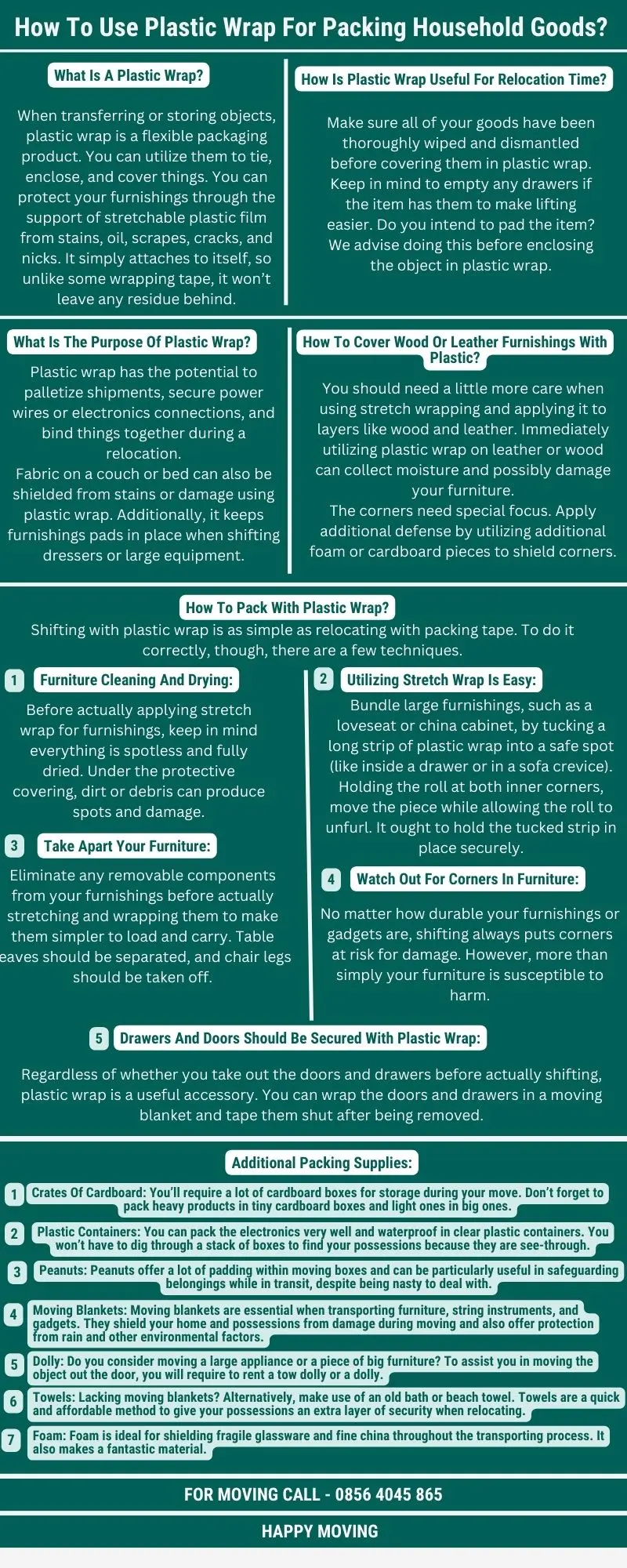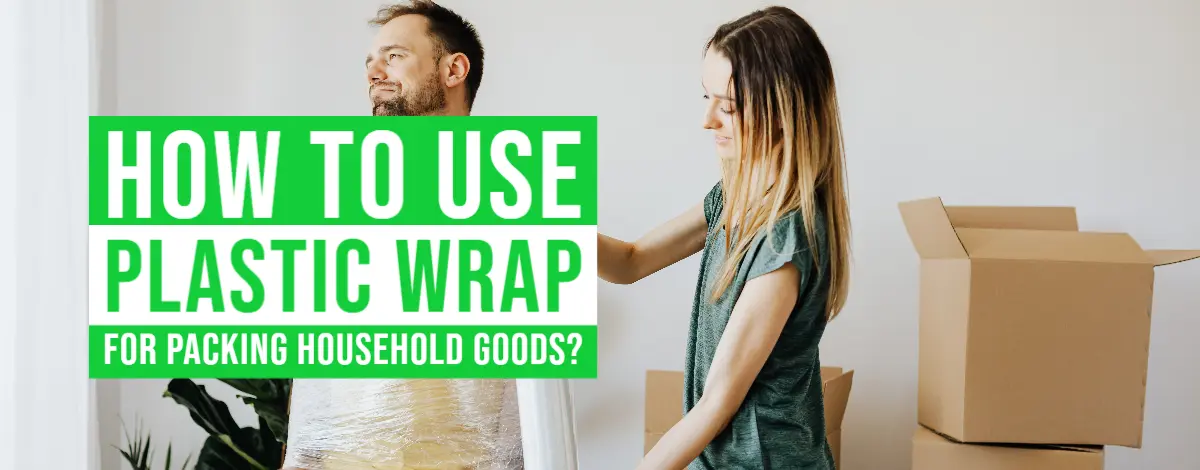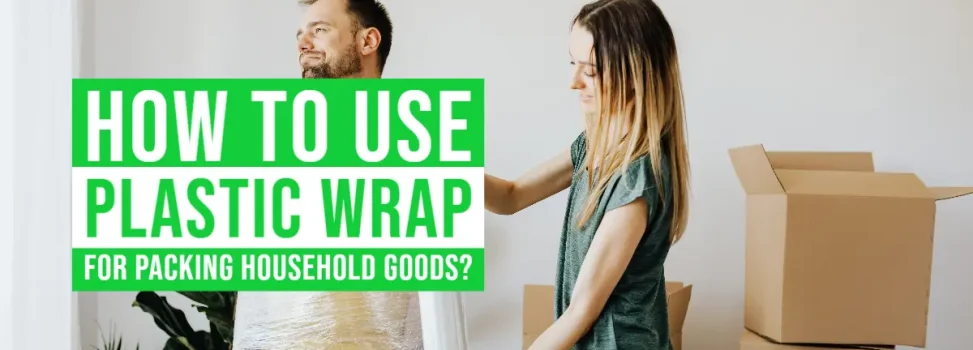Are you preparing your home for a move? Your new closest companion will be a plastic wrap. One of the most crucial packing materials to have on hand while preparing your stuff for a relocation is this straightforward, sticky substance. In addition to preventing damage to your furnishings, paintings, and other objects during transit, it will also help you pack smaller by condensing bulky goods like carpets and furniture so that there is more room in the moving truck for your other possessions. Listed below is a brief overview of how to use plastic wrap when relocating.
A Must-Have Item Is A Plastic Wrap:
Did you realize that stretch wrap is not only useful for your cooking area but also your relocation? It can wrap awkward objects like bed rails and prevent furniture from being scratched or scuffed. It can also maintain moving blankets in place on home furnishings. Plastic wrap is excellent for wrapping and safeguarding objects without causing breakage or leaving a sticky mark since it clings to itself but not to surfaces.

What Is A Plastic Wrap?
When transferring or storing objects, plastic wrap is a flexible packaging product. You can utilize them to tie, enclose, and cover things. You can protect your furnishings through the support of stretchable plastic film from stains, oil, scrapes, cracks, and nicks. It simply attaches to itself, so unlike some wrapping tape, it won’t leave any residue behind.
How Is Plastic Wrap Useful For Relocation Time?
Make sure all of your goods have been thoroughly wiped and dismantled before covering them in plastic wrap. Keep in mind to empty any drawers if the item has them to make lifting easier. Do you intend to pad the item? We advise doing this before enclosing the object in plastic wrap.
Only the protective elements themselves will be kept in place by the plastic wrap. When you’re about to begin packing, ask a friend or family member to keep the object still while you cover it in plastic wrap. To make sure that every portion of your object is protected, you might wish to wrap it both horizontally and vertically. What’s best? Packing tape won’t be necessary because plastic wrap adheres to itself.
What Is The Purpose Of Plastic Wrap?
Plastic wrap has the potential to palletize shipments, secure power wires or electronics connections, and bind things together during a relocation.
Fabric on a couch or bed can also be shielded from stains or damage using plastic wrap. Additionally, it keeps furnishings pads in place when shifting dressers or large equipment.
Additionally, you can utilize them to close drawers and doors. When moving a fridge, you can enclose it around the appliance to make sure the door is closed. Additionally, it is useful for locking china cabinet doors and bureau drawers.
How To Pack With Plastic Wrap?
Shifting with plastic wrap is as simple as relocating with packing tape. To do it correctly, though, there are a few techniques.
Here’s how to bind home furnishings with stretch wrap to protect them during your relocation:
Furniture Cleaning And Drying:
Before actually applying stretch wrap for furnishings, keep in mind everything is spotless and fully dried. Under the protective covering, dirt or debris can produce spots and damage.
Vacuum and wipe down furniture pieces, such as sofas, with a moist cloth. Before actually covering these furnishings, let them dry.
Dust should be removed from wood furniture with a dry cloth. When cleaning leather furniture, use a gentle connection, a moderate washing solution, and a leather conditioner. Before actually covering it, let it dry.
Take Apart Your Furniture:
Eliminate any removable components from your furnishings before actually stretching and wrapping them to make them simpler to load and carry. Table leaves should be separated, and chair legs should be taken off.
Table leaves should be wrapped in moving blankets and sealed with plastic wrap and packing tape. Roll chair legs in a shifting blanket so that each leg is completely enclosed. It should not be possible for parts to be contacted. Tape and plastic wrap is used to protect the outside.
Utilizing Stretch Wrap Is Easy:
Bundle large furnishings, such as a loveseat or china cabinet, by tucking a long strip of plastic wrap into a safe spot (like inside a drawer or in a sofa crevice). Holding the roll at both inner corners, move the piece while allowing the roll to unfurl. It ought to hold the tucked strip in place securely.
Watch Out For Corners In Furniture:
No matter how durable your furnishings or gadgets are, shifting always puts corners at risk for damage. However, more than simply your furniture is susceptible to harm.
Corners that aren’t secured risk scraping against walls and doors, which is not the type of housewarming gift you want. Before actually covering your furniture with moving blankets and more plastic wrap for maximum safety, cover foam padding or cardboard with plastic wrap.
Drawers And Doors Should Be Secured With Plastic Wrap:
Regardless of whether you take out the doors and drawers before actually shifting, plastic wrap is a useful accessory. You can wrap the doors and drawers in a moving blanket and tape them shut after being removed.
You can carefully wrap it in plastic wrap if the drawers and doors on your things are still open. Create a strand that resembles a rope and fasten it to a door handle, drawer, or other closure. To close off all moveable openings, wrap the object numerous times.
How To Cover Wood Or Leather Furnishings With Plastic?
You should need a little more care when using stretch wrapping and applying it to layers like wood and leather. Immediately utilizing plastic wrap on leather or wood can collect moisture and possibly damage your furniture.
The plastic wrap may melt and adhere to your item when you are relocating while it is hot outside. Make sure to cover your leather or wood furniture in furniture pads or moving blankets to safeguard it, then use stretch wrap to cinch the pads in place.
The corners need special focus. Apply additional defense by utilizing additional foam or cardboard pieces to shield corners.
Enclose the object in a stretch wrap. Drape the whole furnishings with a big piece of stretch wrap. A small stretch wrap works well to maintain cabinet and drawer doors closed. To hold any paper padding in place, use plastic wrap. To use, walk around the piece while letting the huge roll unfold by placing your fingertips in the center of the empty rolls. The cover will stick to itself, but to get it started, you might require a companion to hold it in place. With scissors, cut it.
For Your Relocation, Order Plastic Wrap:
Although plastic wrap is readily available in the kitchen area of any grocery store, you should purchase rolls designed expressly for relocation. They have grips that are simple to operate and are sized to fit larger goods.
Additional Packing Supplies:
Crates Of Cardboard:
You’ll require a lot of cardboard boxes for storage during your move. Don’t forget to pack heavy products in tiny cardboard boxes and light ones in big ones.
Plastic Containers:
You can pack the electronics very well and waterproof in clear plastic containers. You won’t have to dig through a stack of boxes to find your possessions because they are see-through.
Peanuts:
Peanuts offer a lot of padding within moving boxes and can be particularly useful in safeguarding belongings while in transit, despite being nasty to deal with.
Moving Blankets:
Moving blankets are essential when transporting furniture, string instruments, and gadgets. They shield your home and possessions from damage during moving and also offer protection from rain and other environmental factors.
Dolly:
Do you consider moving a large appliance or a piece of big furniture? To assist you in moving the object out the door, you will require to rent a tow dolly or a dolly.
Towels:
Lacking moving blankets? Alternatively, make use of an old bath or beach towel. Towels are a quick and affordable method to give your possessions an extra layer of security when relocating.
Foam:
Foam is ideal for shielding fragile glassware and fine china throughout the transporting process. It also makes a fantastic material.
Using Movers With Experience:
Of course, you may always hire experts to pack and organize your belongings for a move. Fortunately, several movers and shipping businesses focus on handling and packing these specific items. The online portal 1Support offers packers and movers for you to choose from. They are quite skilled at packing your stuff using plastic wrap.
Don’t be intimidated by plastic wrap, commonly known as stretch wrap, even though it might be challenging to use. It’s one of the greatest and most effective materials for wrapping big objects when moving, despite its sticky, drive-you-crazy characteristics. Stretchy plastic wrap can hold even the largest objects together for the duration of the transfer and is typically tear-resistant.
When relocating, plastic wrap is frequently applied to pieces of furniture with drawers and doors, like tables, filing cabinets, storage boxes, trunks, and side tables. Additionally, when shifting, plastic wrap can provide an extra layer of safety for paintings, sofas, seats, and anything else with cushions. It can also be utilized to keep pieces of dismantled furniture like a bed or table together while being moved.
There is a straightforward option if you need to shield furniture from scuffs and damage while you get ready to relocate. Plastic wrap, often known as a stretch wrap or stretch film, is a simple, affordable solution for securing large equipment and furniture together.


